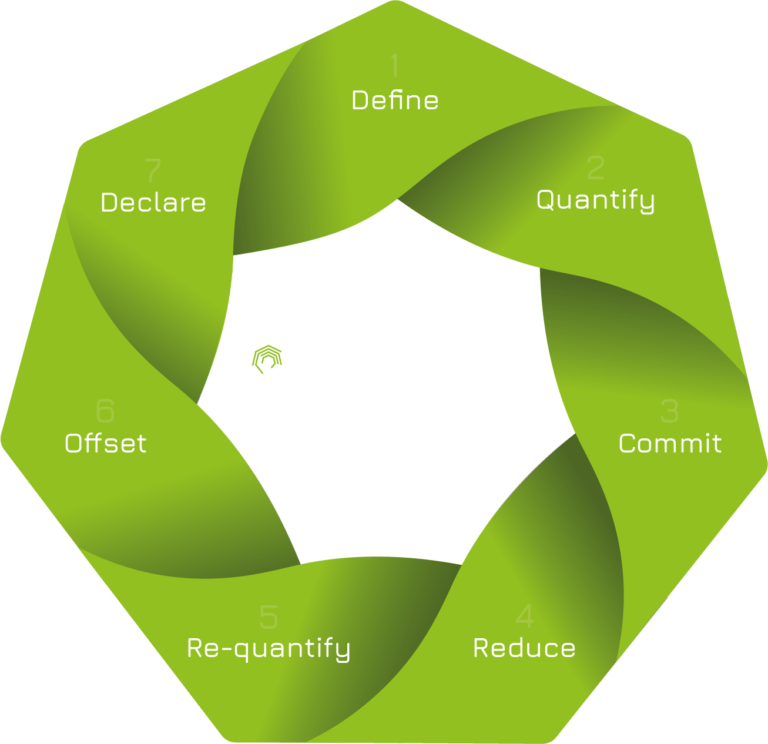As businesses strive to adopt comprehensive sustainability strategies, one crucial component that must not be overlooked is Scope 3 greenhouse gas (GHG) emissions management. Scope 3 emissions are indirect emissions that stem from a company’s value chain, such as the production, transportation, and disposal of goods and services. These emissions extend beyond an organisation’s direct control but can significantly influence its overall carbon footprint.
Managing and reducing Scope 3 emissions can be a complex process, requiring diligent tracking, goal-setting, and collaboration with various stakeholders throughout the supply chain. Despite these challenges, a comprehensive approach to Scope 3 GHG emissions management is essential in achieving a truly sustainable, low-carbon business model.
In this blog article, we will delve into the importance of addressing Scope 3 emissions and share strategies to measure, manage, and reduce them effectively. We will provide practical advice on enhancing supply chain sustainability, embracing circular economy methodologies, and setting ambitious yet attainable GHG emissions reduction targets to create a comprehensive sustainability strategy. Furthermore, we will offer insights into how we can support your Scope 3 emissions measurement and management efforts through our expert guidance and industry knowledge.
I. Understanding the Different Scopes of Greenhouse Gas Emissions
Greenhouse gas emissions are typically categorised into three distinct scopes:
1. Scope 1 emissions: These are direct emissions resulting from activities under a company’s control, such as fuel combustion in vehicles, boilers, or furnaces.
2. Scope 2 emissions: These relate to indirect emissions caused by an organisation’s consumption of purchased electricity, heat, or steam.
3. Scope 3 emissions: These are indirect emissions that take place within a company’s value chain, including both upstream and downstream activities, such as raw material extraction, transportation, and end-of-life disposal.
For a comprehensive approach to sustainability, businesses must consider and address emissions across all three scopes.
II. Measuring Scope 3 Greenhouse Gas Emissions
Effective management of Scope 3 emissions begins with accurate measurement, which entails:
1. Identifying emission sources: Begin by mapping your value chain and pinpointing where greenhouse gas emissions originate, such as in the manufacturing, transportation, or disposal processes.
2. Collecting data: Collaborate with suppliers, partners, and other stakeholders to obtain emissions data, while also taking into account the proportion of the emissions that can be attributed to your business’s activities.
3. Assessing boundaries and setting priorities: Given the broad scope of emissions sources to consider, it may be necessary to establish boundaries for measurement and target high-impact areas first, ensuring that resources are dedicated to reducing the most significant emissions.
4. Monitoring and reporting: Establish a system for routine emissions tracking and reporting, with the goal of maintaining transparency and encouraging ongoing improvement.
III. Strategies for Managing and Reducing Scope 3 Emissions
Armed with a complete picture of Scope 3 emissions within your value chain, there are several strategies your business can deploy to manage and reduce these emissions:
1. Enhance supply chain sustainability: Work closely with suppliers to implement sustainable business practices, including responsible sourcing, improved resource efficiency, and waste reduction initiatives.
2. Promote circular economy principles: Encourage the use of recycled materials and design products for reusability or recycling, thereby reducing the environmental impact of raw material extraction and end-of-life disposal.
3. Adopt smart transportation solutions: Optimise transportation routes, re-evaluate distribution networks, and utilise more efficient modes of transport to reduce emissions stemming from the movement of goods.
4. Foster collaboration and proactive engagement: Engage with stakeholders throughout the value chain to identify shared goals, create collaborative emission reduction projects, and establish best practice standards to drive sustainable change.
IV. Setting Scope 3 Emissions Reduction Targets in Line with Global Guidelines
As part of their sustainability strategies, businesses should establish robust Scope 3 emissions reduction targets that align with internationally recognised guidelines, such as the Science Based Targets initiative (SBTi). The SBTi provides a framework for setting targets in line with the goals of the Paris Agreement, which seeks to limit global warming to well below 2°C above pre-industrial levels:
1. Assess your climate impact: Begin by evaluating your business’s current contribution to climate change and identify reduction targets that reflect your fair share of global efforts to mitigate warming in line with the Paris Agreement.
2. Set ambitious yet achievable goals: Establish progressive reduction targets for Scope 3 emissions that consider both short-term objectives and long-range goals, with a focus on continuous improvement and consistent advancement in sustainability performance.
3. Monitor progress and update targets: Regularly assess your performance against set emissions reduction targets, adapt as necessary to maintain momentum and stay on track, and periodically review targets to ensure ongoing alignment with global climate objectives.
The Integral Role of Scope 3 Emissions Management in a Comprehensive Sustainability Strategy
Effectively addressing Scope 3 greenhouse gas emissions is crucial for businesses seeking to advance along the path to carbon neutrality and achieve a truly comprehensive sustainability strategy. By diligently measuring, managing, and reducing these indirect emissions across the entire value chain, your organisation can significantly improve its environmental performance, foster stakeholder trust, and contribute to global climate goals.
With our guidance and support at Carbonology®, we can help your business navigate the complexities of Scope 3 emissions management and lay the groundwork for a sustainable, low-carbon future. Embark on this vital journey towards a more responsible business model by taking control of your company’s Scope 3 emissions today.

